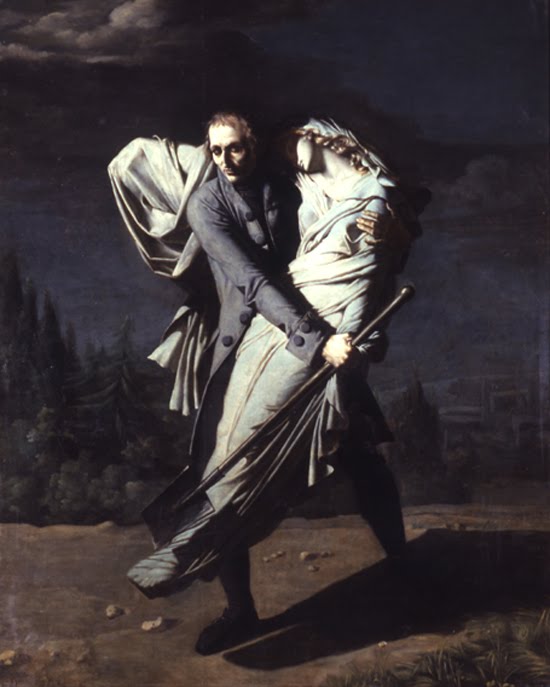Mary Shelley’s Frankenstein is one of the most thoroughly examined books in literary history. Its themes and manifestations permeate our culture and have yielded a massive and ever-growing body of work. Elizabeth Young’s Black Frankenstein, The Making of an American Metaphor (University of New York Press, 2008) is an important addition as it effectively breaks new ground, proposing a deep analysis of Frankenstein as a racial metaphor in American culture.
Perhaps the first metaphorical reference to Frankenstein came in 1824, shortly after Mary Shelley’s novel of 1818 had been adapted, with phenomenal success, to the theater. George Canning, the British Foreign Secretary, addressing the issue of the West Indian slave trade, referred to “the splendid fiction of a recent romance” in which a dangerous creature is “raised up” with “the thews and sinews of a giant” but with no perception of right and wrong. Canning, an abolitionist, was promulgating a slow and gradual approach to ending slavery, paternalistically warning against immediate emancipation of the Negro who possessed “the form and strength of a man, but the intellect only of a child”.
Canning’s statement, without benefit of context, was used in America by proslavery apologist Thomas Dew as a vivid illustration of the dire consequences of abolition, and with it, the Black Frankenstein entered American consciousness.
Elizabeth Young tracks the onset of the metaphorical Monster and its affinity with the vocabulary of racial rebellion through political cartoons, editorial and fictional uses. In 1829, for instance, the language of Mary’s Monster, cursing his wretchedness, is identical to that found in an antislavery manifesto of free African American David Walker who wrote of “the Coloured people” as “miserable, wretched, degraded and abject”. The Monster spoke of revenge on his creator much like Walker’s admonition that, “some of you… will yet curse the day you were born.”
Young grippingly documents the Frankenstein parable in American fiction, touching, among others, on the automaton in Herman Melville’s The Bell-Tower (1855), Stephen Crane’s The Monster (1898) about a black coachman disfigured in a fire while saving the life of a white child, and The Sport of Gods (1902) by Paul Laurence Dunbar, that namechecks Frankenstein in reference to its murderous protagonist, a monster made by racism. Moving on to films, Young examines Griffith’s Birth of a Nation (1915) as a monster movie, replete with its ugly stereotypes, and James Whale’s Frankenstein and Bride of Frankenstein playing out against the backdrop of the 1931 Scottsboro trial and the failure of an anti-lynching bill in 1935. Theme obliging, even the execrable Blackenstein (1973) merits analysis.
The book wraps with a fascinating exploration of comedian and activist Dick Gregory’s own explorations of the Black Frankenstein concept.
“I told Momma, ‘I just saw Frankenstein and the monster didn’t scare me’¨, wrote Gregory in his essay, Dreaming of a Movie (1968). “But now that I look back, I realize why I wasn’t frightened. Somehow I subconsciously realized that the Frankenstein monster was chasing what was chasing me. Here was a monster, created by a white man, turning upon his creator. The horror movie was merely a parable for life in the ghetto. The monstrous life of the ghetto has been created by the white man. Only now in the city of chaos are we seeing the monster created by oppression turn upon his creator.”
Note, the cover of Black Frankenstein uses Milton Glaser’s art from the inside-cover spread for Dick Gregory’s Frankenstein live album of 1971.
In an afterword, Young reflects briefly on Frankenstein references in the contemporary art of Glenn Ligon, pointing, perhaps, to the need for a full-blown survey of Frankenstein in the visual arts.
Black Frankenstein is a relentlessly serious, scholarly tome and the reader best come prepared to be challenged by some of its concepts, and provoked by some of its ideas. A chapter dealing with metaphor-making, the definition of monster metaphors, meta-metaphorical meanings and Frankenstein as a metaphor for metaphor itself demands careful reading and will no doubt boggle a casual reader.
On the other hand, if you’re willing to wade into this robust, remarkably researched study of Frankenstein’s cultural and racial significance in America, you’ll find there is much to discover here, and much to think about. Elizabeth Young’s Black Frankenstein: The Making of an American Metaphor is a necessary and important addition to Frankenstein scholarship.
Elizabeth Young’s Black Frankenstein: The Making of an American Metaphor (University of New York Press, 2008).
A short profile of author Elizabeth Young.
Read the introduction to Black Frankenstein, courtesy of NYU Press.
Black Frankenstein on Google Books.
Questioning Authority, a short interview with author Elizabeth Young.
New York University Press page for Black Frankenstein






 Ultimately, I was inspired to write my own graphic novel interpretation of Frankenstein. The powerful story had long haunted me, accumulating as a dream-project that was actually conceived when I was still in high school. My project proposal almost seemed to compose itself, and it’s more to Mary Shelley’s credit that my submission immediately found a publisher.
Ultimately, I was inspired to write my own graphic novel interpretation of Frankenstein. The powerful story had long haunted me, accumulating as a dream-project that was actually conceived when I was still in high school. My project proposal almost seemed to compose itself, and it’s more to Mary Shelley’s credit that my submission immediately found a publisher.



























